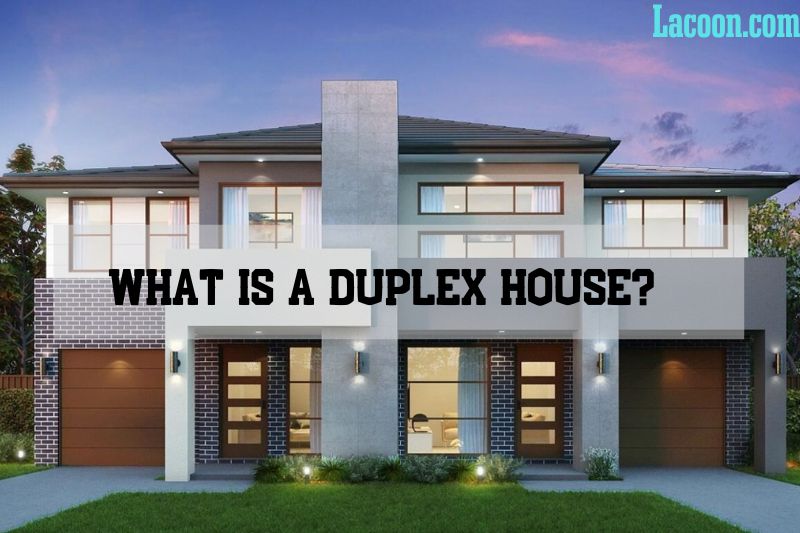Over the years, the concept of housing has evolved significantly, with a wide range of architectural styles and designs emerging to suit homeowners’ varying needs and preferences.
The duplex house is one popular housing style that has stood the test of time. As more and more families are seeking housing options that offer a balance of affordability, functionality, and privacy, duplexes have become an increasingly attractive choice.
In this article, Lacoon will explore what is a duplex house, providing a comprehensive understanding of its types, factors affecting room layouts, and the advantages and disadvantages of duplex living.
What Is A Duplex House?
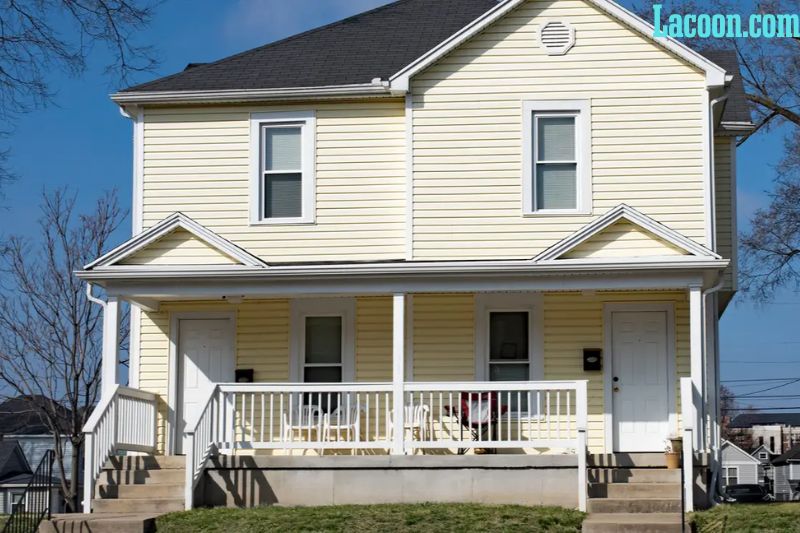
A duplex house is a residential building comprising two separate living units that share a common central wall, also known as a party wall.
Each unit has its own separate entrance, and the two units may be located side by side or above the other.
Duplexes are designed to accommodate two families, with both living spaces offering the same level of comfort, privacy, and functionality.
This housing style is popular in urban areas, as it maximizes the use of available land while providing a sense of community and proximity to neighbors.
What is a Half Duplex?
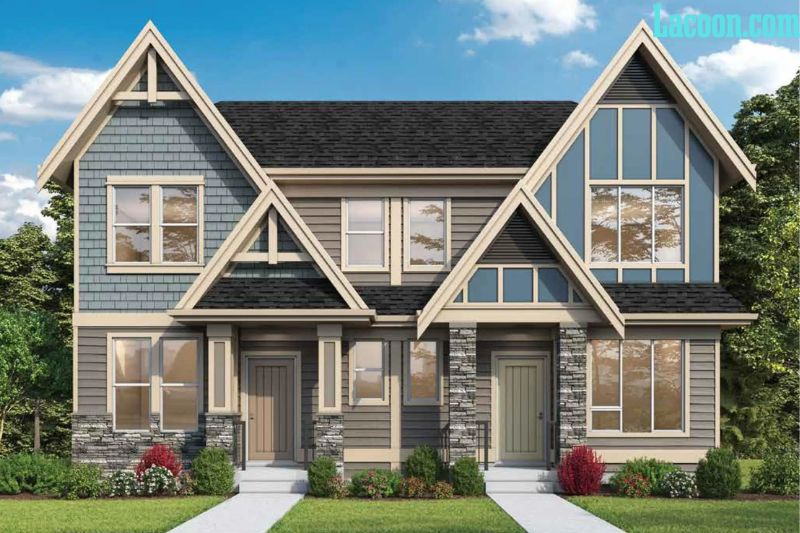
A half duplex is a term used to describe one unit of a duplex house. As mentioned earlier, a duplex house consists of two separate living units that share a common central wall. Each of these units, when referred to individually, is called a half-duplex.
Half duplexes have their own separate entrances, utilities, and outdoor spaces, and they typically mirror the other unit in terms of layout and design.
Each half duplex functions as a separate living space, offering privacy and independence for the occupants while still benefiting from the advantages of duplex living, such as affordability and efficient use of land.
In real estate transactions, it is not uncommon for a half-duplex to be bought or sold independently of the other unit, allowing individual ownership of each side of the duplex property.
This is similar to the concept of a townhouse or row house, where individual units within a larger structure are owned separately.
Duplex House Types
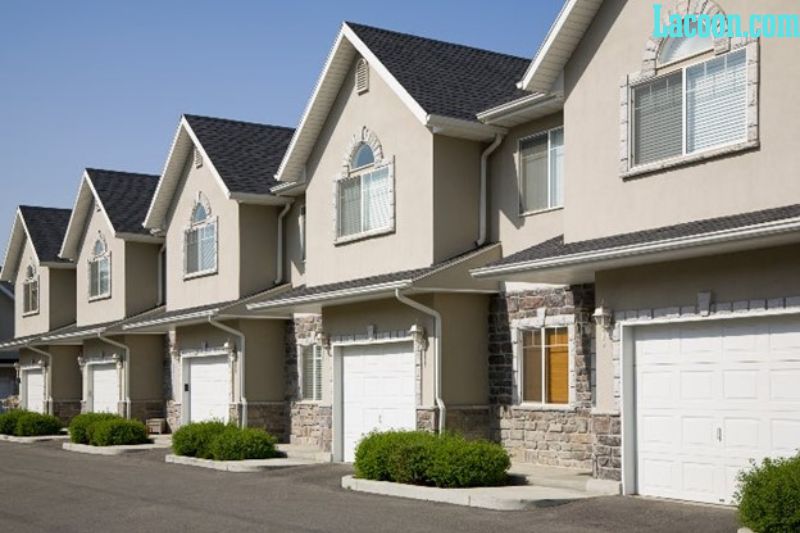
Duplex houses can be broadly categorized into three main types based on their layout and design:
- Side-by-Side Duplex: As the name suggests, this type of duplex features two units placed adjacent to each other. Each unit has its own entrance and is typically a mirror image of the other, ensuring an equal distribution of living space. Side-by-side duplexes are commonly built as single-story or two-story structures, with a shared central wall dividing the two units.
- Stacked Duplex: In a stacked duplex, one unit is located above the other, with each unit having its own separate entrance. This design is a popular choice in areas with limited land availability or where building height restrictions are in place. Stacked duplexes can be found in both single-story and multi-story configurations, depending on the needs and preferences of the homeowners.
- Detached Duplex: This type of duplex is a unique variation of the traditional duplex house. The two units are separate buildings, usually located on the same plot of land, and may share a common driveway or garden. Although they do not share a party wall, detached duplexes still offer the advantages of duplex living, such as reduced construction costs and increased privacy.
Factors Affecting the Rooms in Duplex Houses
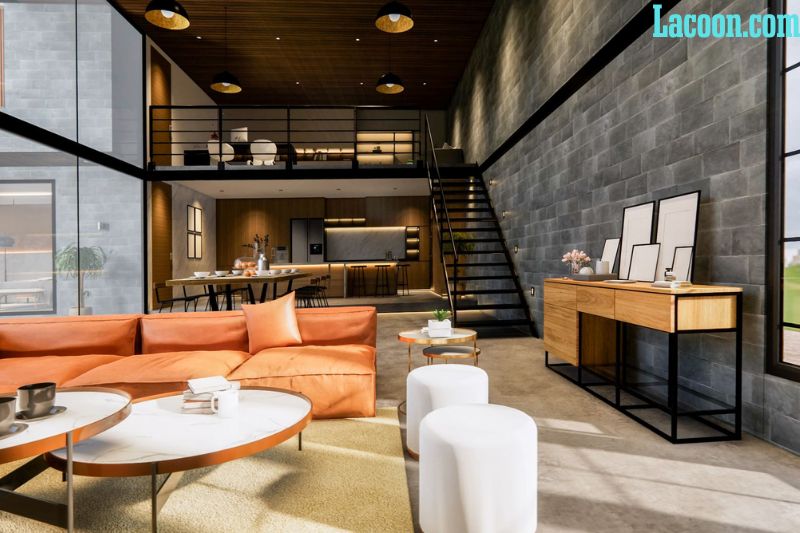
Several factors can influence the layout and design of rooms in a duplex house. These include:
- Available space: The size of the plot and the building restrictions in the area will determine the overall size and shape of the duplex house. This, in turn, will impact the number and layout of rooms within each unit.
- Homeowner preferences: The personal preferences of the homeowners play a significant role in determining the room layout. Some families may prioritize larger living spaces, while others may opt for more bedrooms or a dedicated home office.
- Local building codes and regulations: Local building codes and regulations can dictate certain aspects of the room layout, such as the minimum size of bedrooms, the number of bathrooms required, and the placement of windows and doors.
- Budget: The available budget for the construction or renovation of a duplex house will influence the materials used, the level of customization, and the overall quality of finishes.
Duplex House Advantages

Duplex houses offer several advantages to homeowners, including:
- Affordability: Duplexes are often more affordable than single-family homes, making them an attractive option for first-time homebuyers or those on a budget. The shared party wall reduces construction costs, and the cost of utilities and maintenance can be shared between the two units.
- Income Generation: One of the most appealing aspects of duplex living is the potential to generate rental income. Homeowners can choose to rent out one unit, using the rental income to help cover their mortgage payments or other expenses. This can be a smart investment strategy, especially in areas with high rental demand.
- Privacy: Although duplexes share a common wall, each unit has its own separate entrance, providing a level of privacy that is often lacking in apartment living. The distinct living spaces allow for a sense of independence while still fostering a sense of community with neighbors.
- Flexibility: Duplex houses offer flexibility in terms of living arrangements. They can accommodate multi-generational families, with each unit serving as a separate living space for different generations. This can be especially beneficial for families with elderly members who require assistance but still desire a degree of independence.
- Potential for Appreciation: Duplex houses can appreciate in value over time, just like single-family homes. As the demand for housing continues to grow, well-maintained duplexes in desirable locations can prove to be lucrative investments.
Duplex House Disadvantages

Despite their many advantages, duplex houses also come with some drawbacks:
- Limited Customization: Since duplex houses are designed to accommodate two families, there may be limitations in terms of customization. For example, the shared wall often dictates the layout of rooms, making significant structural changes difficult or impossible.
- Noise: The shared party wall can result in noise transfer between the two units, which can be a concern for some homeowners. Soundproofing measures can be taken during construction or renovation, but complete sound isolation may not be achievable.
- Potential for Conflict: Sharing a wall and other common spaces, such as a driveway or garden, can lead to conflicts between neighbors. It is important for duplex owners to establish clear boundaries and communication channels to avoid disputes and maintain a harmonious living environment.
- Financing Challenges: Obtaining financing for a duplex may be more challenging than for a single-family home. Lenders may require a larger down payment, and some banks may not be willing to finance duplex properties. It is essential to research lending options and work with a knowledgeable mortgage broker to secure the best financing terms.
- Resale Challenges: The resale market for duplex houses can be more limited than for single-family homes. Not all buyers are interested in duplex living, which can result in longer sale times and lower resale values.
What is duplex house design and construction cost in India?
The cost of designing and constructing a duplex house in India varies based on factors such as location, materials, size, and design preferences.
On average, the cost of construction for a duplex house in India ranges between ₹1,500 and ₹2,500 per square foot.
This cost may increase if high-end materials, fixtures, or custom designs are used. Additionally, costs for design services, permits, and utility connections should also be considered in the overall budget.
Is it easy to find buyers for a duplex house?
Finding buyers for a duplex house can be relatively easy, as they appeal to a diverse range of potential purchasers.
Families looking for multi-generational living arrangements, investors seeking rental income, and first-time homebuyers attracted to the affordability of duplexes are all potential buyers.
However, the ease of finding buyers also depends on factors such as the local real estate market, the property’s location, and the overall condition and appeal of the duplex.
Duplex House Ownership

Owning a duplex house comes with unique responsibilities and considerations compared to owning a single-family home. Some key aspects of duplex ownership include:
- Financing: As mentioned earlier, obtaining financing for a duplex may be more complex than for a single-family home. Lenders may require a larger down payment, higher credit scores, or additional documentation.
- Property management: If renting out one or both units, owners must manage tenant relationships, maintenance, and legal obligations related to being a landlord.
- Insurance: Duplex owners should ensure they have adequate insurance coverage for both units, including liability coverage if renting out a unit.
- Tax implications: Depending on the owner’s living arrangements and rental income, there may be unique tax implications for owning a duplex. Consultation with a tax professional is recommended to ensure compliance with local tax laws.
Duplex House Comparisons
Duplex House vs. Two-Storey House
A duplex house is a two-storey structure that consists of two separate living units with a shared wall.
On the other hand, a two-storey house may or may not have two independent living units, and the floors may or may not be connected through a staircase.
Therefore, while all duplex houses are two-storeyed, not all two-storeyed buildings can be categorized as duplex houses.
Duplex House vs. Villa:
A villa is usually a larger, detached, and luxurious home, whereas a duplex house is smaller, more compact, and usually attached to another unit.
Additionally, a villa may or may not have two storeys, while duplex houses always have two storeys.
Villas generally provide more privacy, more outdoor space, and luxurious amenities like a private pool, gym, or clubhouse, unlike duplex houses.
Duplex House vs. Townhouse
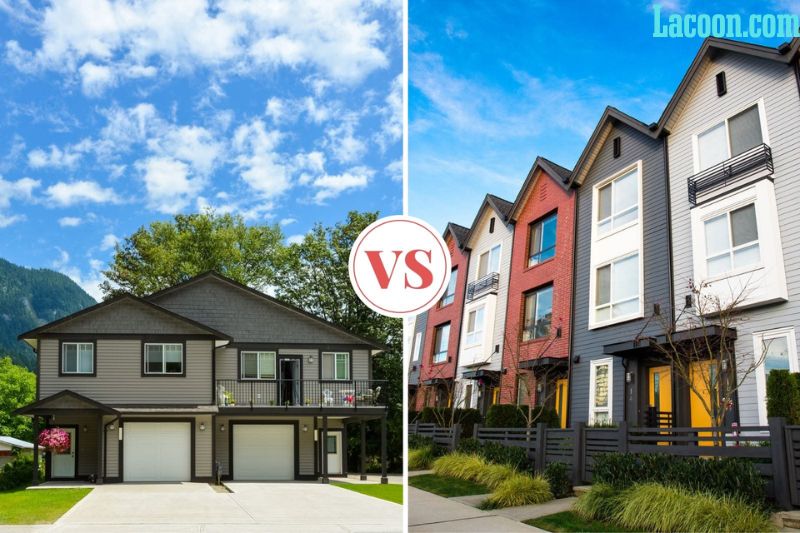
Townhouses are multi-level homes that share one or more walls with other townhouses in a row, while duplex houses share only one wall with another unit.
Duplex houses typically have only two living spaces, whereas townhouses can have multiple living spaces.
Additionally, a duplex house is first purchased by an owner and then rented by a tenant, whereas individuals directly own the property in a townhouse.
Duplex House vs Penthouse
A penthouse is a luxurious apartment located on the top floor of a multi-storey building or apartment, while a duplex house always has two storeys.
Penthouses offer panoramic views and are usually designed with high-end amenities like a private elevator, terrace or balcony. Whereas duplex houses may have shared outdoor space or no outdoor space at all.
Duplex House vs Independent House
An independent house is a single-family home that is not attached to any other unit, while a duplex house is a two-unit dwelling that shares a wall with another unit.
Independent houses may have as many floors as desired, while duplex houses always have two floors.
Independent houses generally offer more privacy and outdoor space, whereas duplex houses are more compact and efficient in terms of space utilization.
Duplex House vs. Flat
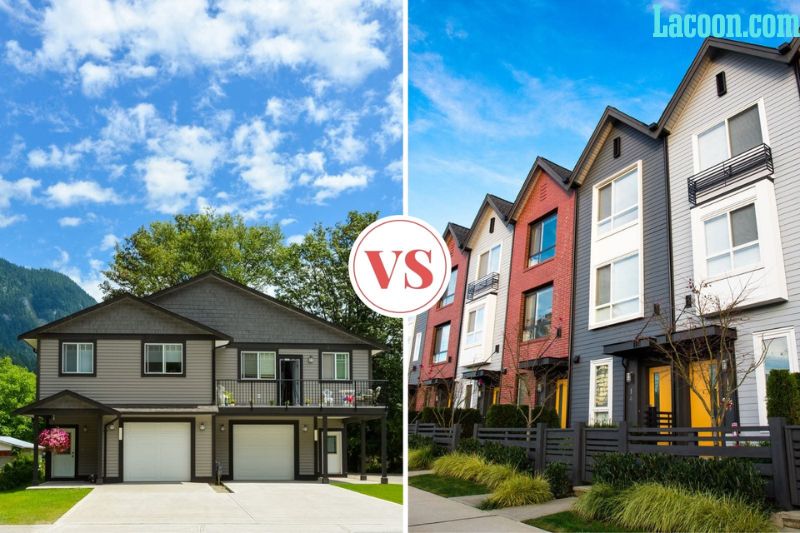
Flats are single-unit dwellings that are located in multi-unit buildings, whereas duplex houses are two-unit dwellings that share a wall with another unit.
Flats offer less privacy but require less maintenance and have fewer responsibilities than duplex houses.
Duplex houses may have more outdoor space or shared amenities but will require more maintenance and upkeep, making them more expensive to maintain than flats.
Duplex House: Different Meanings In Different Places
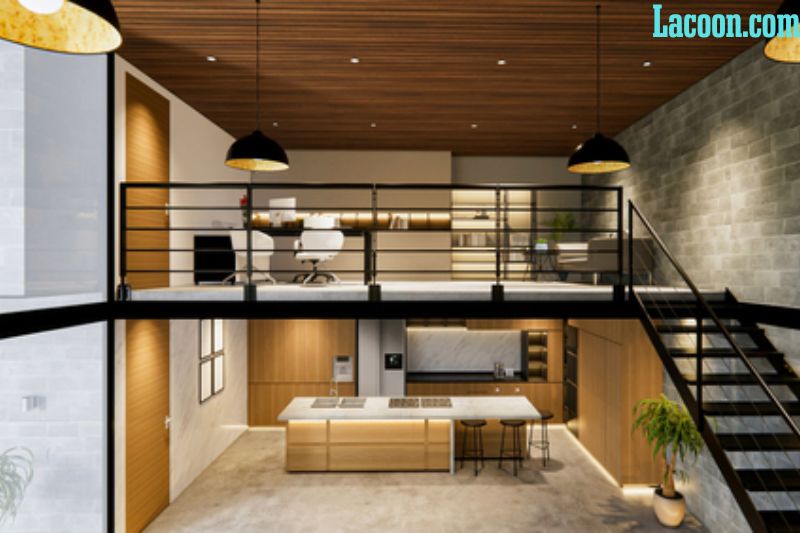
A duplex house is a unique residential structure that has varying interpretations depending on the location in which it is found.
In North America, a duplex is a single building composed of two separate units, each with its own entrance and often sharing a common wall or floor.
These units can be either side-by-side or stacked vertically, offering residents the feel of a single-family home with the convenience of a multi-family dwelling.
In countries like Australia and India, a duplex house refers to a two-story building where each level functions as a distinct living space. It is complete with individual kitchens, bedrooms, and living areas.
These spaces are connected by an internal staircase, providing occupants with a sense of privacy and independence while still offering the benefits of shared resources and infrastructure.
Despite the varied interpretations, the core concept of a duplex remains consistent: to provide two separate living spaces within a single structure.
This unique design allows families or individuals to enjoy the benefits of homeownership while benefiting from the financial advantages and shared amenities of multi-unit dwellings.
FAQs

Can I rent out one side of my duplex house?
Yes, you can rent out one side of your duplex house to generate rental income. Many duplex homeowners choose to live in one unit and rent out the other to cover their mortgage payments.
Are duplex houses more expensive than single-family homes?
The cost of a duplex house can vary depending on location, size, and amenities. In some cases, duplex houses may be more affordable than single-family homes due to the shared costs of construction and maintenance.
Do duplex houses have separate utilities?
In most cases, each unit in a duplex house will have its own separate utilities, such as electricity, gas, and water. This allows each tenant to pay for their own usage and avoid disputes over shared bills.
Is a duplex house a good investment?
A duplex house can be a good investment for those looking to generate rental income or live in one unit while renting out the other. It can also offer long-term appreciation in value, making it a wise investment choice for some people.
How do I finance a duplex?
Financing a duplex is similar to financing a single-family home. You can use conventional mortgages, FHA loans, VA loans, or other specialized loan programs.
Lenders will typically consider factors like your credit score, debt-to-income ratio, and down payment amount when determining loan eligibility.
What are the responsibilities of a duplex owner?
Duplex owners are responsible for property maintenance, property taxes, insurance, and managing the rental unit if they choose to rent out one of the units.
Conclusion
Duplex houses offer a unique housing solution that balances affordability and community living. With various types and layouts available, these homes can cater to today’s homeowners’ diverse needs and preferences.
While some disadvantages exist, the benefits of duplex living can outweigh these drawbacks for many families and investors.
As with any real estate decision, conducting thorough research and consulting with professionals is crucial to determine if a duplex house is a right choice for your specific needs and circumstances.

